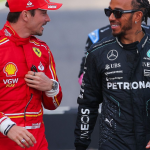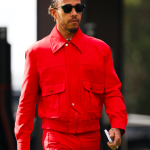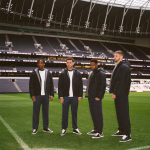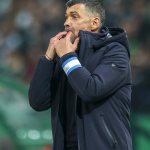
Formula 1 is becoming art
Race cars liveries are drawn by street artists and arrive as NFTs on the digital marketplace
June 10th, 2022
Formula 1 continues to race on and off the track, carefully taking care of its image and its entrepreneurial development. Keeping up with today's times can be a difficult challenge even for a world that has its absolute center in racing, yet the most famous world of engines is certainly succeeding in pursuing this goal, creating a fresh and modern frame around the core represented by the races.
On several occasions, indeed, Formula 1 had already opened its doors to the world of fashion and recently has opened them to Street Art and to the digital field too. On the occasion of the first historic Miami Grand Prix, some teams took the opportunity to tap into the glamorous aura of the city, dressing up in its emblematic graffiti style. Miami is famous for the sun, the beaches and its unique luxury, but at the same time it is also a living museum of Street Art, mainly exhibited in the Wynwood neighborhood (full of galleries, shops and restaurants). Riding this artistic wave, Mercedes, Williams and AlphaTauri collaborated with some of the most renowned street artists on the scene to create custom liveries that embody the freedom and style of the city.
Williams relied on Surge – famous American artist – who, for the FW44 used by Latifi and Albon, recolored the traditional logo of the team in line with the "mural" theme, also creating a limited edition full livery for the old FW41 and exhibiting it in the Fan Zone in South Beach as a real work of art. AlphaTauri, on the other hand, has started a wide-ranging collaboration with Remote, creating a customized livery – always for display purposes as in the case of Williams and Surge – and working together with the two AplhaTauri drivers, Gasly and Tsunoda, who freed their artistic vein on two white helmets. The most interesting part, however, comes here: the two helmets will in fact be sold materially in a charity auction, but also digitally as NFTs (non-fungible tokens), opening the doors to a universe in very strong expansion and symbol of the Faenza team's avant-garde thinking. Finally, Mercedes made its dive into Street Art using the creativity of Mad Dog Jones for a detailed work on the front wing of Hamilton and Russell's cars. The works have been reproduced in digital format as NFTs, in order to be sold to support a project in favor of inclusiveness in the world of motorsports. As with Williams and AlphaTauri, Mercedes also commissioned the artist to create a custom livery for the occasion, to be assigned to the highest bidder for the NFTs.
The graffiti-mania, however, went even further, leading to the creation of a redesigned McLaren and exhibited in Bra, at the Venice Biennale and at Art Basel (right in Miami). The project required the participation of many personalities: the Bolognese Matteo Macchiavelli, who had the idea; street artist Jisbar who painted half of the car inspired by the myth of Formula 1 Ayrton Senna (the other half was painted taking inspiration by some of the legendary liveries of the Brazilian driver); the collector Gianluca Tramonti, who donated the McLaren. Also in this case, the project went ahead with the creation of a collection of NFTs, to also land in the digital artistic universe.
Thus the racing universe once again projects its gaze to the future to bring to the paddock, the track and the digital market a new vision capable of combining art, fashion, NFTs and social intentions.



























